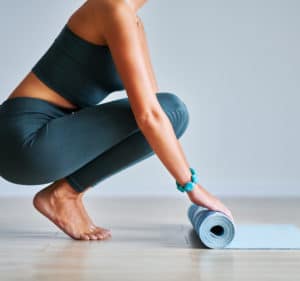
4 Ways to Start Your New Year with a Healthy Spine
As the new year approaches, you might be thinking about ways in which you could improve the health of your spine in the year ahead. New Year’s resolutions are a great way to evaluate the habits you have developed this year and ways you can improve them. Whatever your resolutions are, there are four important ways you can build healthier habits your spine will thank you for. If you’re suffering from back pain, there are changes you can make to alleviate or reduce those symptoms and help you become the best version of yourself. Keep reading for some simple ways to start your New Year with a healthy and happy spine. 1. Stretching and Exercise Improve Your Spine Health Exercising is so great for your spine health because it targets the weak core muscles that support the spine, strengthening them for the long term. Exercises such as crunches, situps and pushups prevent spine and back injuries from occurring in the future. Aerobic exercises are great for contributing to a healthy spine by encouraging blood flow to the tissues that can help with providing repair and nutrients to any injured tissue. Stretching is another great way to support spine health. Practices like yoga especially assist in creating flexibility and strength in your core and back muscles. You don’t have to exercise for an extended duration to reap the benefits, about 30 minutes each day will keep your spine healthy. Great examples of spine-bolstering exercises include: Walking, jogging, or running 30 minutes daily Stretching and yoga Strength training such as crunches and pushups Incorporating these habits into your daily routine can help support the spine and keep it healthy into the New Year. 2. Prioritize a Good Night’s Sleep for a Healthy Spine Sleep is important for spine health because the body uses that time to restore and recover. To gain the benefits of a good night’s sleep, it’s essential that you also prioritize a long duration of sleep which allows you to experience the REM stage of deep sleep. This New Year’s goal will have to work in conjunction with another goal to promote the ability to relax and stay asleep, which can be difficult depending on your spine health. Some good strategies to improve your quality of sleep are: Removing any devices such as TVs, phones or video games from the bedroom Avoiding any caffeinated or alcoholic beverages before bedtime Have a set bedtime and follow it consistently Create a bedtime routine that involves relaxation techniques like reading, hot tea, meditation, or journaling Sleeping with a pillow under your knees Investing in a semi-firm mattress When you prioritize a good night’s sleep your spine will be able to restore and recover for the next day. 3. Give Up Cigarettes to Alleviate Back Pain This New Year’s resolution is challenging but can make all the difference in your spine and back health. To alleviate back and spine pain, consider quitting this coming year. Cigarettes often hinder blood vessels causing pain, discomfort

